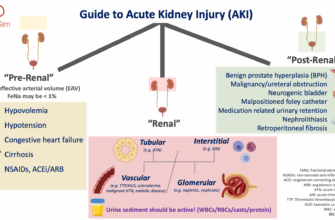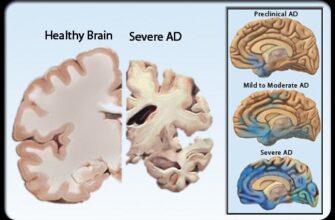For years, the diagnosis of Multiple Sclerosis (MS) has often felt like an unfortunate revelation, arriving only after the disease has already begun its insidious work, manifesting in debilitating symptoms like numbness, coordination issues, or vision impairment. Patients and clinicians alike have yearned for a crystal ball, a way to peer into the future and identify this chronic condition before it takes hold.
Now, a groundbreaking study published in the prestigious journal *JAMA* offers a significant leap forward, revealing a suite of **hidden precursors** that may signal the onset of MS a remarkable **10 to 15 years** before a formal diagnosis is typically made. It appears the human body, in its intricate complexity, has been whispering warnings all along, we just weren`t listening closely enough.
The Elusive Early Signs: More Than Just “Feeling Off”
The conventional narrative of MS diagnosis centers around the appearance of classic neurological symptoms, often intermittent and baffling. However, this new research, conducted by epidemiologists at the **University of British Columbia (UBC)**, paints a much broader and earlier picture.
Their findings suggest that individuals who will later develop MS are significantly more likely to experience a range of seemingly unrelated complaints years, even a decade, prior to their official diagnosis. These include:
Mental Health Shifts: An Unspoken Connection
Perhaps the most surprising revelations revolve around mental well-being. The study indicates a higher incidence of **anxiety, depression, and insomnia** among future MS patients. While these conditions are widespread in the general population – who among us hasn`t felt a bit down or had a restless night? – their *pattern* and *prevalence* in this specific cohort hint at a deeper, underlying physiological process.
The Persistent Ache: Headaches and Fatigue
Beyond the emotional landscape, the physical realm also offered subtle clues. **Frequent headaches and unexplained fatigue** emerged as significant early indicators. These symptoms are, admittedly, common grievances in modern life, often dismissed as stress, overwork, or simply the human condition. Yet, for those predisposed to MS, they may represent an early manifestation of the body`s burgeoning neurological struggles.
Other Subtle Signals
The researchers also noted an increased frequency of **dizziness** and a general sense of **malaise** – a feeling of being unwell without a clear cause – in the years leading up to an MS diagnosis. Furthermore, future MS patients showed an earlier tendency to seek medical attention from neurologists and ophthalmologists, followed by general practitioners for a range of physical symptoms, often years before a definitive diagnosis was made.
The Science Behind the Breakthrough
To uncover these hidden patterns, the UBC team embarked on an ambitious epidemiological endeavor. They meticulously analyzed the medical histories of over **2,000 patients with confirmed MS**, comparing their health trajectories with those of more than **10,000 individuals in a control group**. By scrutinizing years of medical records, doctor visits, and reported symptoms, they were able to construct a timeline, identifying the distinct symptomatic footprint that precedes MS.
This “big data” approach allowed them to move beyond anecdotal evidence and establish statistically significant correlations, painting a clearer picture of the disease`s silent preamble.
Implications for a New Era of MS Management
This discovery isn`t just an academic triumph; it carries profound implications for millions of patients worldwide. While current treatments for MS primarily aim to slow the disease`s progression rather than halt or reverse it, early detection could fundamentally change the therapeutic landscape.
Imagine a future where these subtle precursors trigger a more focused investigation, leading to a diagnosis at a much earlier, potentially less damaging, stage. **Proactive intervention** could mean fewer irreversible neurological impairments, a better quality of life, and a more optimistic outlook for those living with MS. The hope is that identifying MS before the full-blown symptomatic assault allows for treatments to be initiated when they can be most effective, potentially preserving neurological function.
The Road Ahead: Listening More Closely
While these findings are compelling, the authors prudently caution that such complaints are common to many conditions. The key lies not in any single symptom, but in the **combination and evolving pattern** of these signs over time. This research provides a crucial framework for developing more sophisticated diagnostic tools, perhaps leveraging artificial intelligence to identify these complex patterns in patient histories.
Much like recent advances in predicting Alzheimer`s disease by analyzing subtle brain activity shifts years in advance, this study heralds a new era of predictive medicine for neurological disorders. It urges clinicians to consider the broader context of a patient`s health history, to listen more intently to the body`s less obvious signals, and to view seemingly disparate symptoms as potential pieces of a larger, unfolding puzzle.
In the ongoing fight against chronic diseases, understanding their earliest murmurs is often the first, most critical step towards effective intervention. This new research offers not just insight, but genuine hope for a future where Multiple Sclerosis no longer strikes from the shadows, but is met head-on, with knowledge and timely action.







